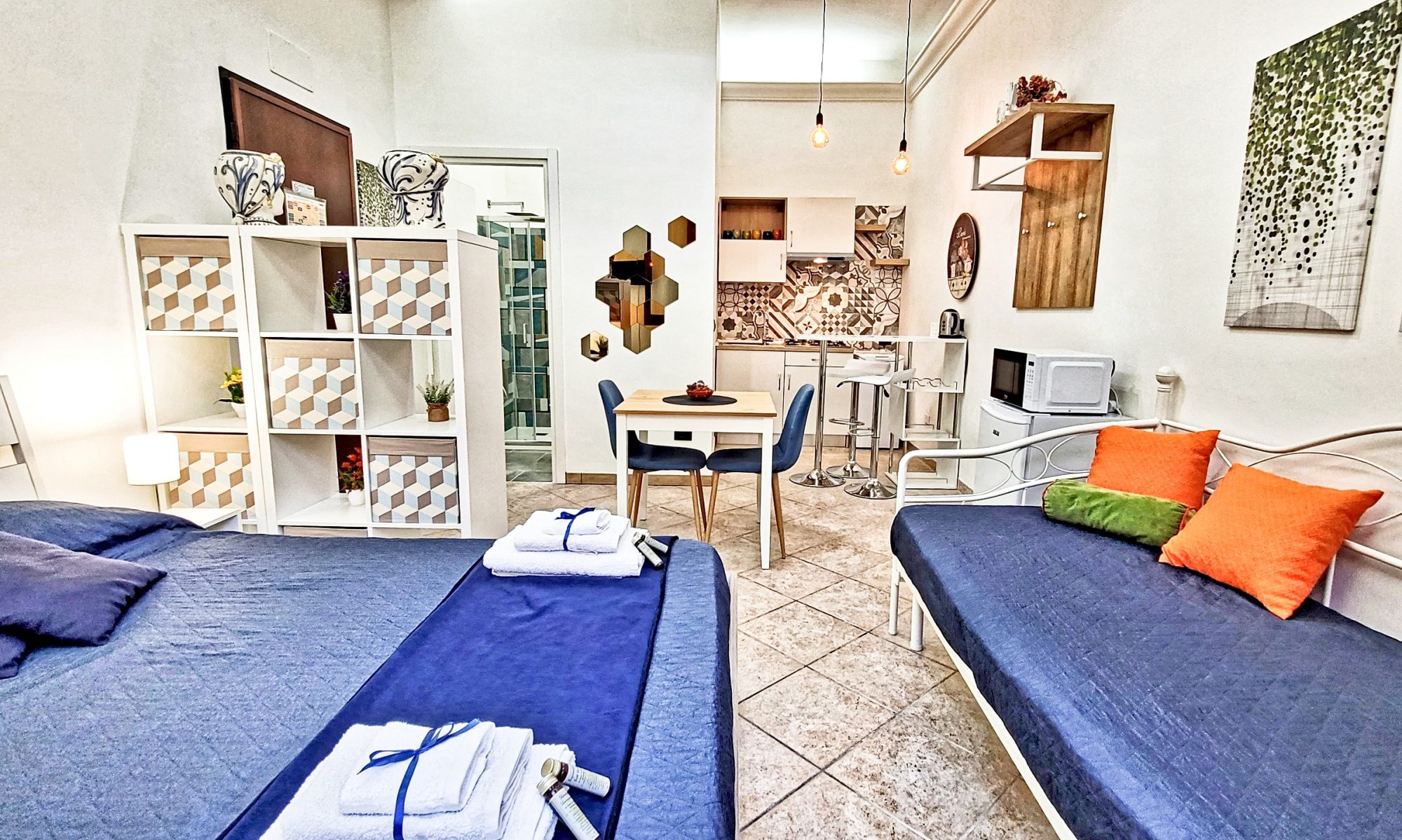Avola is located 6km away from Noto, famous all over the world for its baroque style; it is 10 km from the beautiful beach of Fontane bianche and 15 km from San Lorenzo, Calamosche (three of the most beautiful and famous beaches of eastern Sicily) and from the natural reserve of Vendicari. At some 20 km away one can visit the splendid maritime village of Marzamemi, with its typical golden beaches, the fascinating Ortigia island that constitutes the most antique part of the city of Siracusa and, in the province of Ragusa, the cities of Ragusa and Modica (famous for its chocolate), Scicli and the characteristic beach of Punta Secca; the latter owes its fame to having hosted the filming of the TV series “Montalbano Commissioner” and “The Young Montalbano”.
Avola
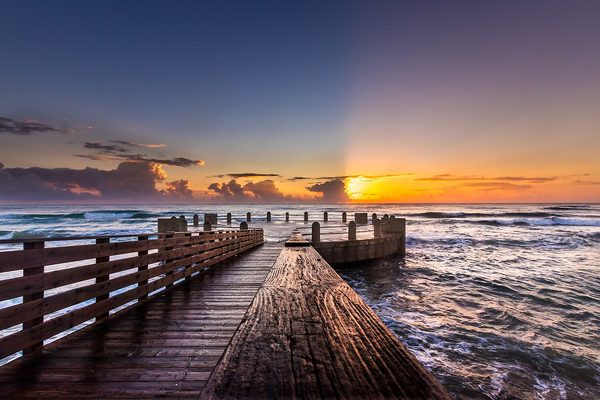
Avola is a modern and vivid town in between the Ionian Sea and the Hyblaean Mountains in a vast area rich in almond tree plantation. The almonds from Avola are exported all over the world and are mainly used for the confetti, the nougat, the blancmange, the granita’s and many other delicacies that contributed to getting Avola to be considered the land of the Sicilian almond. Besides the almond, Avola also owes its notoriety to the wine called Nero d’Avola (Black of Avola), that took its name from the vine with the same name.
The layout of the historic kern is a regular hexagon with an inscribed cross with the main square at its center (the Umberto I Square) and the other four at its ends (Queen Helena, Trieste, Theater and Vittorio Veneto). To discover the town one must start at the large and airy central square, Umberto I, with its main church dedicated to St. Nicholas of Bari. The other squares of the hexagon are equally deserving of a visit, just like the many churches and mansions that can be sighted along the route and the superb theater in neoclassical style.
Regarding Old Avola, destroyed by the 1693 earthquake, the delightful canyons and natural lakes of Cavarande di Cassibile, wedged between the gorges dug by the rivers in the soft limestone, are certainly worth a visit.
Last but not least, Avola has a beautiful shoreline very close to the center. The main feature of the shoreline is the “roundabout on the sea” and the maritime village with its the tuna fishery the ruins of which can be seen even today.
Noto
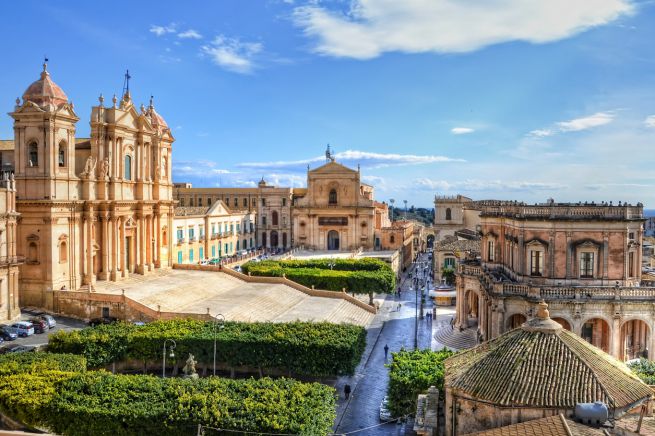
Having visited Avola, you can proceed towards Noto, a little baroque jewel settled on a high plain that dominates the Valley of Asinaro, covered by citrus trees.
After the 1693 earthquake the town was reconstructed according the rules of baroque urban development, from the streets to the marvellous nobiliary houses built with locally available limestone. Each construction has been built with utmost care for every detail symbolic to the baroque, in a chain of decorated facades, enchanting balconies and many other details that won’t escape the sight of the most attentive tourist.
Noto is an important and beautiful municipality of the Sicily, a UNESCO world heritage and a necessary destination for all tourists in this area.
The Church of St. Francis of Asisi designed by architect Sinatra, and the Monastery of the Benedictines (containing the St. Clara Church) open on the main square of Noto, the peak of the architecture of Noto, with its characteristic flight of stairs leading to the beautiful Cathedral. Across the street from the Cathedral there is the town hall (the Ducrezio Mansion) and the Bishop’s Mansion.
Of particular relevance besides the churches are some nobiliary mansions, like the Nicolaci, Trigona, Astuto, that represent the pomp and splendour of this splendid corner of Siciliy.
Few km away of the new and baroque center of Noto lies the old town, a very rich location in roman times and very important in the Middle Ages, completely destroyed by the previously mentioned earthquake.
Siracusa
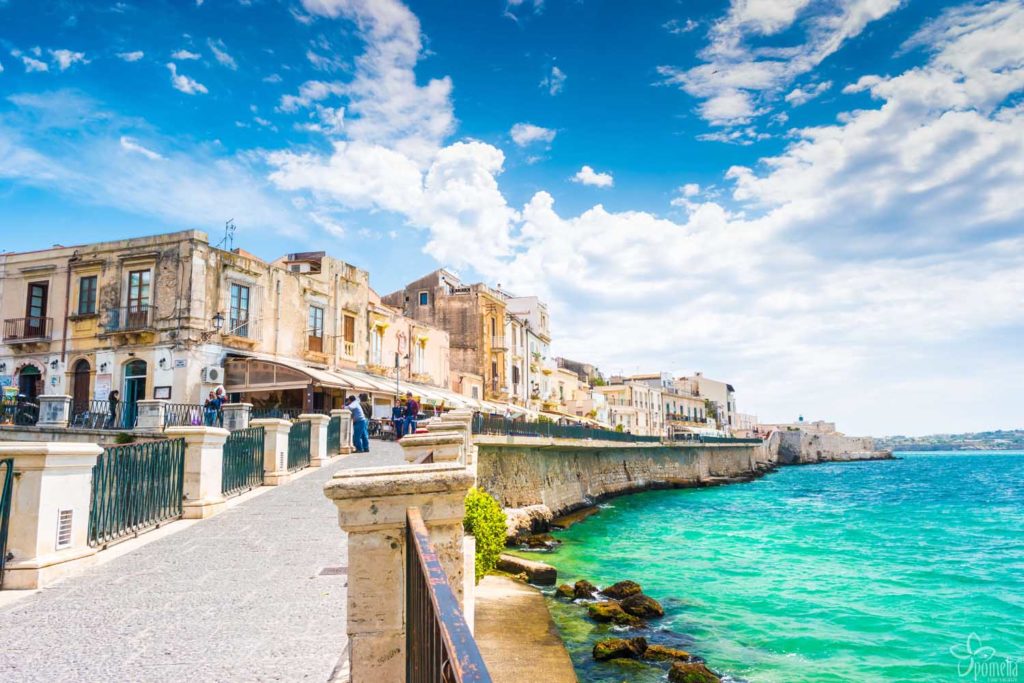
Located on the south eastern coast of the island, partially on the promontory-island of Ortigia and partially on mainland, Siracusa has a millenary history. After the violent earthquake of 1693, the historic center of the city took on a baroque style that still characterizes it today.
The city of Siracusa characterized by great historical, architectural and scenic assets has been declared world heritage by the UNESCO in 2005 together with the rocky Necropolis of Pantalica. The religious patrimony consists mainly of churches, monasteries and Christian convents. Among the most notable structures are: St. John’s church at the Catacombs with the remotest crypt of San Marciano, the churches of Santa Lucia alla Badia and Santa Lucia al Sepolcro and the Rotonda di Santa Lucia, all dedicated to the patron of the city. Among the most recent constructions, the Pantheon of Siracusa and the Sanctuary of Our Lady of Tears. The largest burial area is represented by the complex system of catacombs, one of the largest in the world, originated in the late roman age. The Maniace Castle, in gothic style, rose during the first half of the third century, designed by Frederic the 2nd of Svevia and played an important military role in the city: it was used as a prison to fight against the pirate incursions. Many were the forts and the watch towers that rose all over the city.
Marzamemi
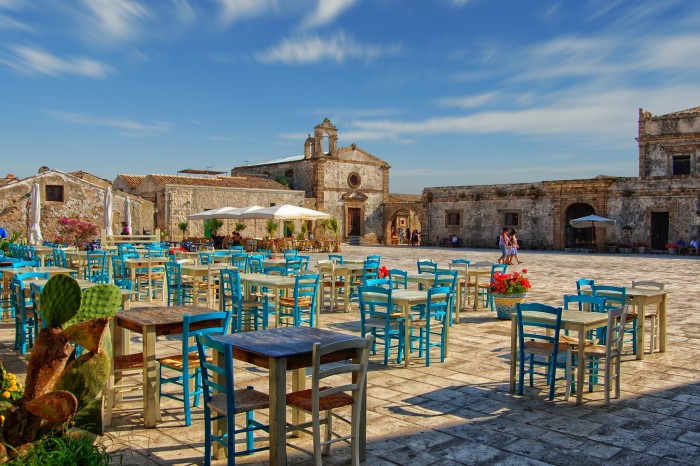
Marzamemi is a delightful fisherman’s village developed around the now abandoned tuna fishery where the tuna used to be processed and where evidence can be found of the seafaring life: boats, storage space, utensils. In the town there is a typical square with a church, the homes on a single level and the manor house of the princes of Villadorata.
Nearby these architectural pearls the vivid Sicilian nature is ready to delight the tourists with the fauna oasis of Vendicari and the clear waters of Capo Passero where the currents of the Ionian and Mediterranean Sea meet.
